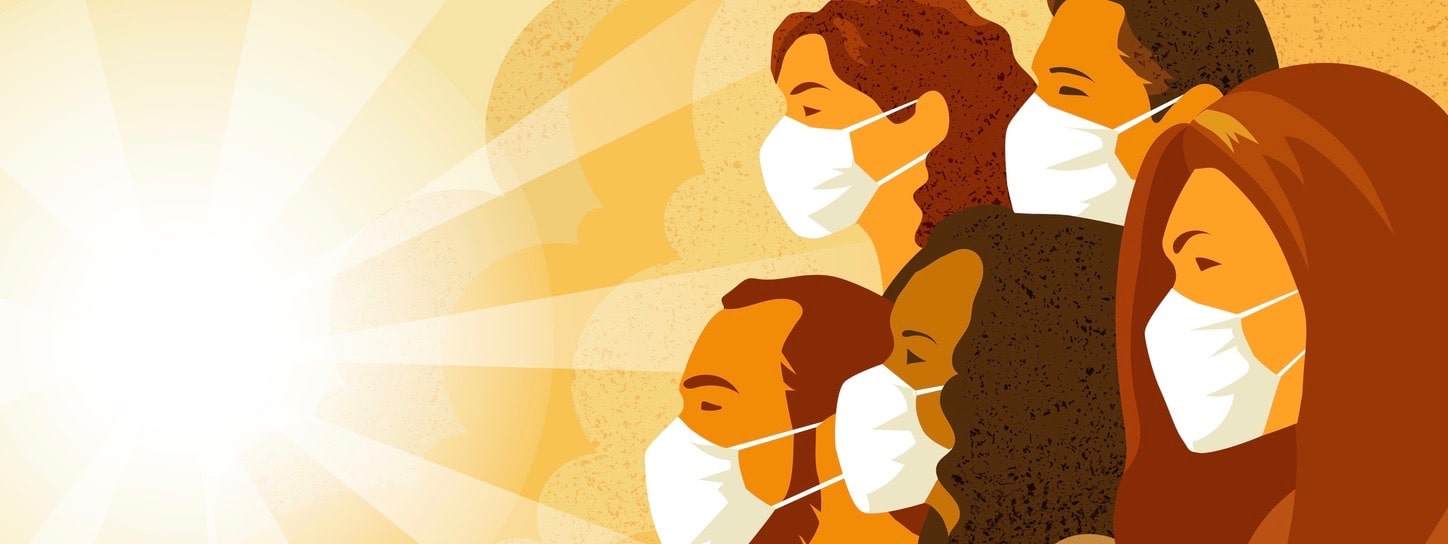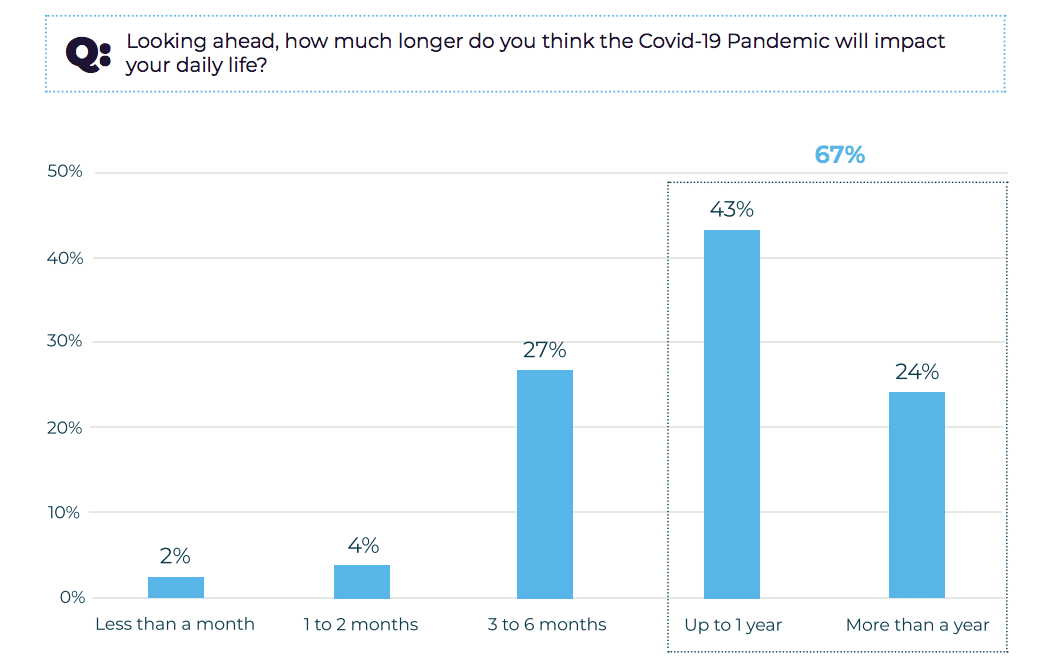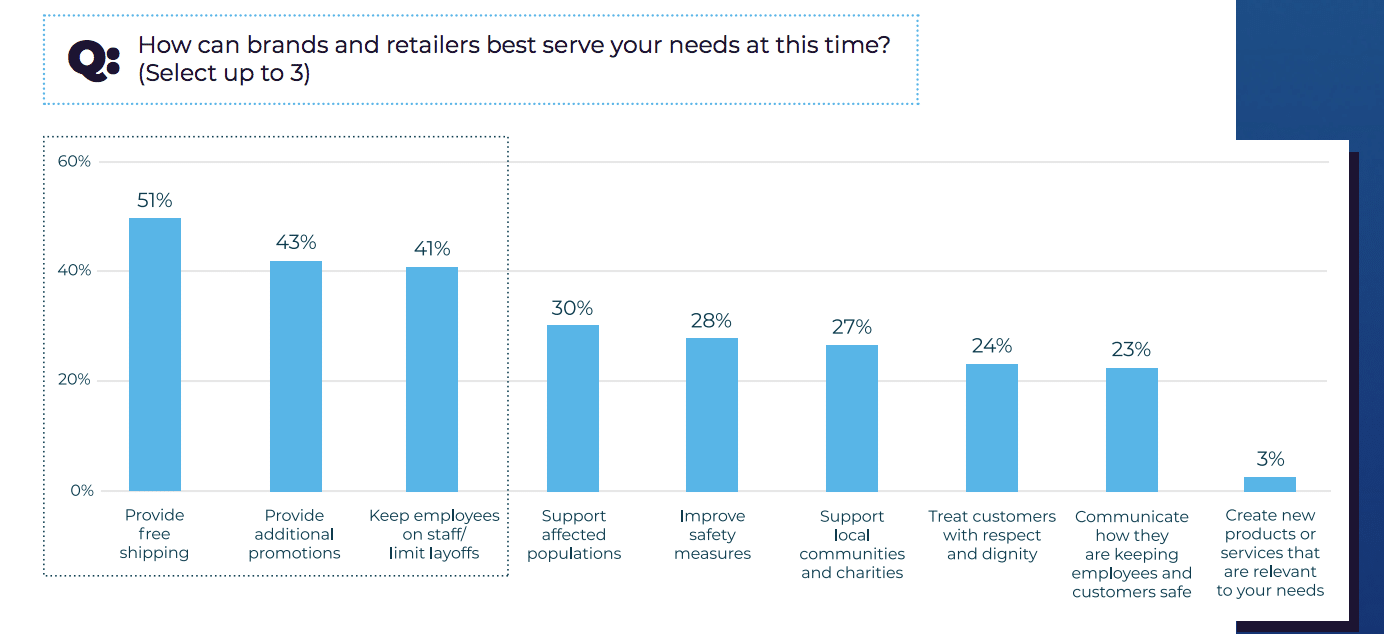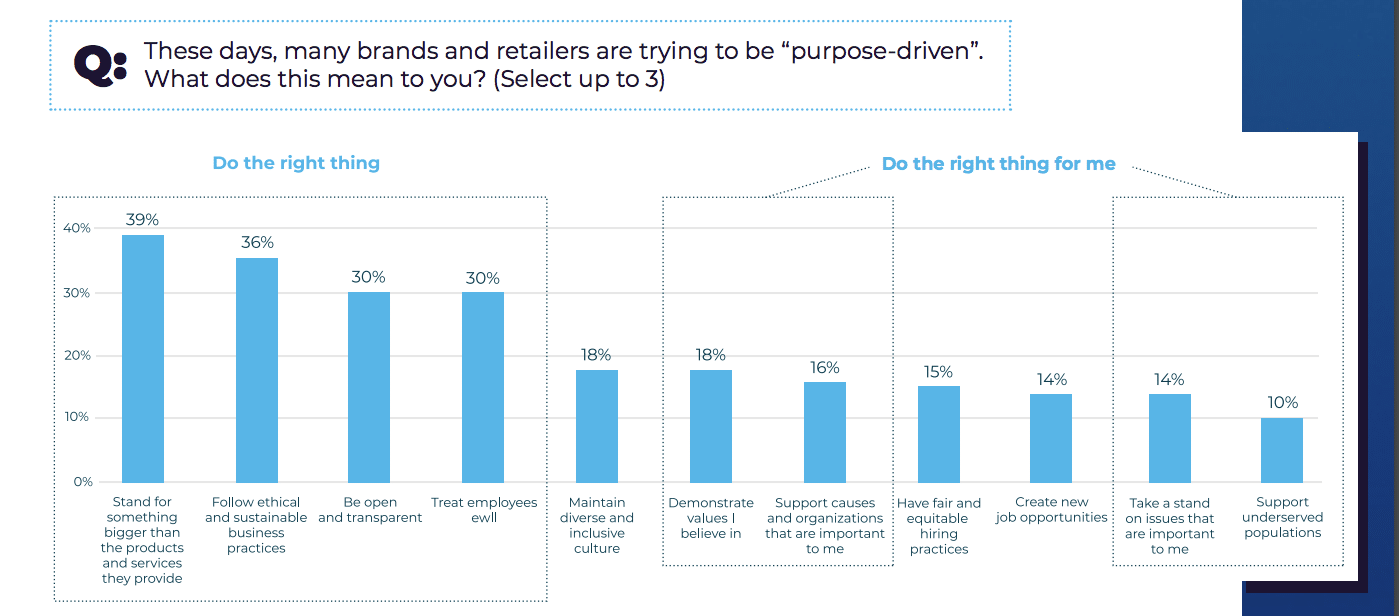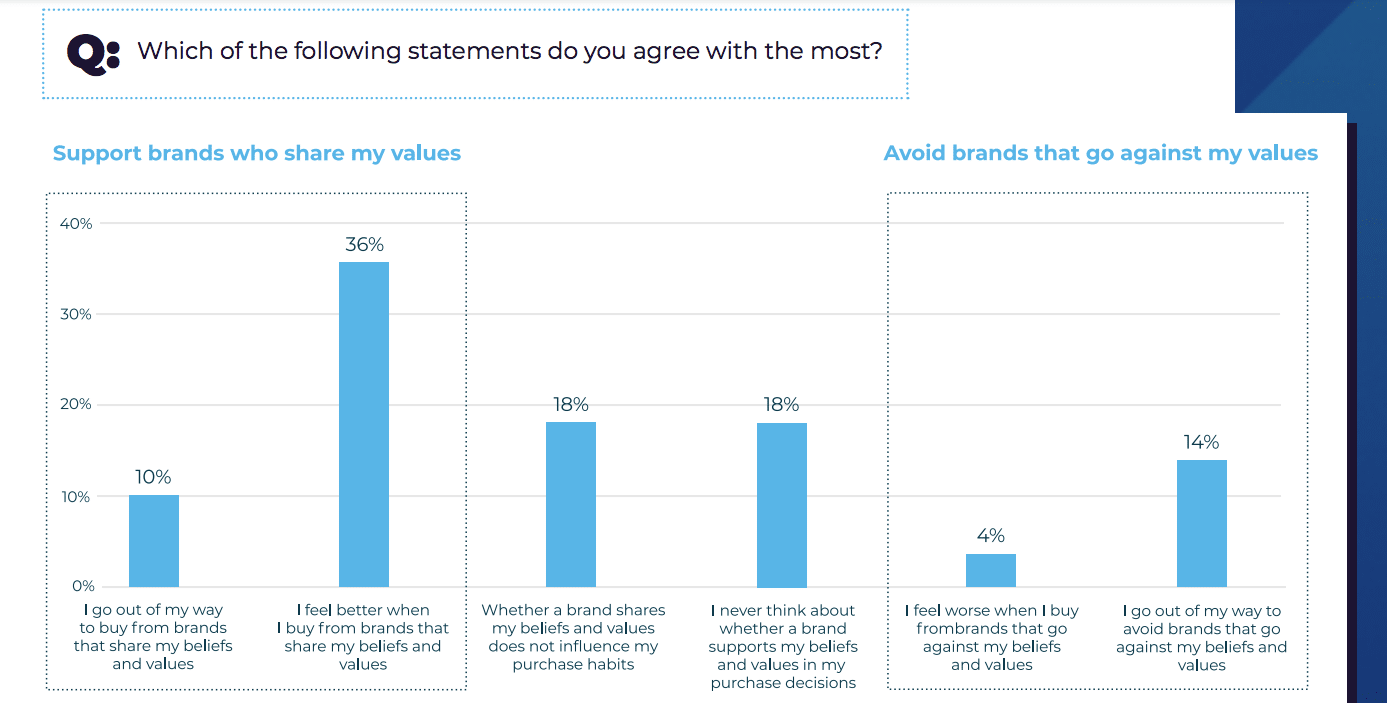Remember when COVID first forced people to stay home and businesses to shut down? At the time, most of us thought how the next few weeks were going to be awfully inconvenient. Little did we know that nearly a full year later, the pandemic would not only persist but actually be much worse. And even with a vaccine making the rounds and light at the end of the proverbial tunnel, this is no time for brands and marketers to think week-to-week, or even month-to-month. We made that mistake once already.
New research from identity marketing firm SheerID and retail networking facilitator CommerceNext set out to gauge the emotional pulse of consumers during the pandemic and understand how brands and retailers can emotionally connect with them during this difficult time.
The psychological impact of COVID-19 and what consumers want from retailers
A full two thirds of consumers (67 percent) believe that COVID-19 will continue to impact their lives up to a year or more from now. The most common ways they feel impacted are mental—such as a need to maintain friendships and social interactions (49 percent) as well as their mental health (48 percent)—rather than physical, such as maintaining their health (29 percent) or their financial well-being (25 percent).
To help respond to those concerns, 41 percent of consumers say retailers can best serve their needs right now by keeping employees on staff. This was the third most popular answer given after free shipping (51 percent) and providing additional promotions (43 percent) for them and (30 percent) for affected populations like front-line health workers.
Consumers often define “purpose-driven” brands as those that are doing the right thing in general vs doing the right thing for them, specifically. The findings of this survey bear out this thinking. When asked, “What does purpose-driven mean to you?,” the top four responses were “Stand for something bigger” as a company (39 percent), “Follow ethical and sustainable business practices” (36 percent), “Be open and transparent (30 percent) and “Treat employees well” (30 percent).
Conversely, respondents generally rated lower benefits that catered specifically to themselves: 18 percent believed that purpose-driven brands are those that “demonstrate values that I believe in,” while 16 percent said selected “support causes and organizations that I believe in.” That being said, 46 percent of consumers stated they are more likely to buy from brands that share their beliefs & values.
“What jumped out to us from this survey is, even with a nationwide vaccine roll-out underway, people recognize that their lives are not likely to go back to ‘normal,’ anytime soon,” said Scott Silverman, co-founder of CommerceNext, in a news release. “What’s also clear is that the American buyer expects retailers to take care of their employees and look out for the greater good, to the extent possible. For years, we have heard about the trend towards conscientious consumerism. Certainly, while consumers still want a great deal, they’re also gravitating towards brands that consider the needs of society as a whole.”
Needs of consumers vary by affinity group
The study also surveyed shoppers from different affinity groups such as law enforcement, frontline care workers, students, teachers and seniors to get their respective views on the pandemic. The findings below reflect the beliefs of those within a particular group vs. those across all affinity groups:
- Students feel a more pronounced impact on mental health (53 percent vs 48 percent), financial security (33 percent vs 25 percent) and not surprisingly, education (20 percent vs 8 percent). They were also more likely to want brands to support local communities and charities (34 percent vs 27 percent).
- While law enforcement, firefighters and EMTs are among the groups most exposed to COVID given the nature of their jobs, they were slightly more optimistic about the length of time COVID will continue to have an impact.
- Students lean more towards supporting brands they believe in, while Military and Law enforcement are more likely to go out of their way to avoid brands who go against their beliefs.
- Teachers (30 percent), Firefighters/EMT (33 percent) and Law Enforcement (30 percent) felt a greater impact on their ability to maintain hobbies and interests vs the total group (23 percent).
“These findings suggest that the COVID playbook that brands have employed over the past year isn’t something that retailers should throw away even when the vaccine is widely distributed,” said Jake Weatherly, CEO of SheerID, in the release. “We are seeing long-term trends in terms in the ways people relate to retailers. Consumers across all segments now expect brands to go beyond merchandising and align their brand with purposes that support the community at large.”
Download the full report here.
This new data comes from a survey of 1030 shoppers between December 2 and December 9 conducted by Bizrate Insights.

